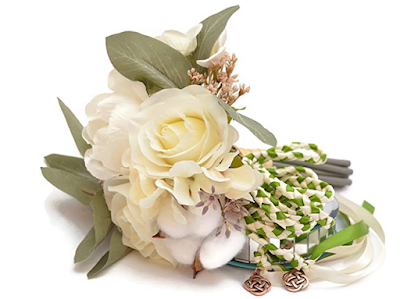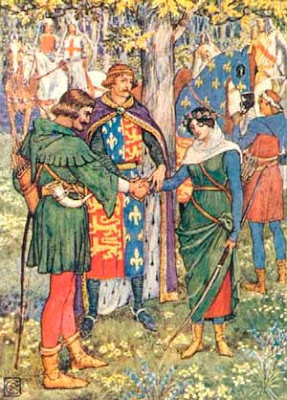A legend of sorts
accompanies the Italian wedding soup recipe. The story says that this soup was served at
Italian wedding receptions and that it worked more or less as an aphrodisiac. Following
the wedding reception, when the bride and groom consummated the marriage they’d
be full of plenty of vim and vigor. Even as I researched this I wondered about
the effect of the soup on the other wedding guests. But that would be another
story, and if it were true, I don’t think the soup would be reserved for
wedding receptions. While it’s a great story, the truth is that Italian wedding
soup has nothing to do with weddings. Not only that, but some people suggest its
origins have nothing to do with Italy because Spaniards carried it into Naples.
But again, that’s one side of the claims. The other side is that it was a
well-known recipe in Italy long before that. I'm not here to solve who is right.
Why is it called wedding soup?
Minestra maritata, which means “married soup” is an ancient peasant soup recipe. That's how it got the name Italian wedding soup. It earned the title originally because of the 'marriage' of the main ingredients. Originally, it consisted of inexpensive bits of leftover meat and leafy greens. The green vegetables (minestra) blended well with meat (maritata) and was eaten by people in Italy who couldn’t afford food. It was usually made using bits of sausage or meatballs and whatever green or slightly bitter veggies they had on hand and often contained no meat at all. The soup helped them not to feel hungry throughout the day much like the cabbage soup fad years back. If you’re looking for the recipe, it turns out there are a number of variations. As the stories go, some say it originated in Naples, others in Calabria, and others in Puglia, but all the recipes contain green vegetables and bits of meat. The recipe also has ties to America because the Neapolitans brought it when they arrived, though the Americanized version tends to be lighter. The one thing they all have in common is that they are a delicious way to add some greens to your diet.
How to make Italian wedding soup
Today, pasta often finds its way into the soup pot. I’ve included a video below of the soup I’ve tried. It won’t disappoint, though it is far from a peasant dish with some added ingredients. For this one, pasta is added to the soup bowl before serving.
While Italian wedding
soup isn’t traditionally a soup served at weddings, feel free to add it to your
wedding menu and serve it with crusty bread, homemade croutons, breadsticks, or an
arugula salad. For fun, you can add some Italian wedding cookies to your dessert table too. And if you’re not planning a wedding, it’s still a perfect dish for
the holidays. Special, delicious, and with history you can make your own. Plus it's easy to adjust to be keto friendly too.
Photo credits: Tom Ipri



%201742.jpg)

.png)









